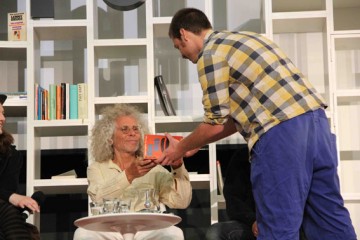Hi Leon
Why is it always so late? I read your contribution again after 2 weeks and I thought, wow. You instantly understood the link between destruction and protection.
1. What might or ought the artist and her/his art seek to destroy, in the service of protecting, or opening up, a vital space?Yes this ‘vital space’ is also an art space. But not just an art space: it is a space for politics and the body. The vital space is also the space dividing artists from their audience: the space policed by the museum with is careful management of this boundary. What can first be ‘destroyed’ is the sense of the lonely artist, the author confronted by the world, the nineteenth century idea that has been gradually transformed into the self-invented cultural worker negotiating the possibilities of the culture industry in its new formation as a knowledge factory.
So what is being destroyed is beyond the idea of the work of art as a product: what is being destroyed is the concept of the artist as a brand, as a product.
Many people are grappling to find a way out of this confined space. Many artists are fighting for new ways to be part of the new cultural dissidence in the West. It’s a question of finding the clear political message hidden within the bushes of ideology in the West (when they leave the West, everything looks clearer, but is it?). And this – process of dissidence, of making a global reach – has been happening for a long time. Continue reading →





